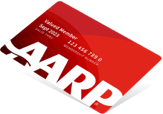 loan on a desktop. " width="1140" height="655" />
loan on a desktop. " width="1140" height="655" />  loan on a desktop. " width="1140" height="655" />
loan on a desktop. " width="1140" height="655" />

Get instant access to members-only products and hundreds of discounts, a free second membership, and a subscription to AARP the Magazine.
Wrong. People 50 and older are on the hook for about 20 percent of the nation's student loans, and since 2004, student loan debt for those 60 and older has grown faster than any other age group. Individuals took on student loan debt not only for their own education but for the education of their children and grandchildren.
The CARES Act, the sweeping stimulus legislation enacted in March, includes relief for student loan borrowers. Under the new law, no payments are required on federal student loans owned by the U.S. Department of Education between March 13, 2020 to as long as 60 days after June 30, 2023. In addition, the interest on these federal student loans will automatically drop to zero percent between March 13, 2020 and August 28, 2023. Private student loans, and federal student loans not owned by the Education Department, are not covered by the CARES Act.
No. The zero percent interest rate and suspension of payments (technically called an “administrative forbearance") through as long as 60 days after June 30, 2023 happen automatically for all borrowers with student loans owned by the Department of Education. If you made a payment after March 13, you can contact your servicer to get a refund.


ARTICLE CONTINUES AFTER ADVERTISEMENT
The zero percent loan rate applies to federal student loans owned by the Department of Education and includes:
Federal Family Education Loans (FFEL) were made prior to 2010. The FFEL program includes Stafford loans, whose interest is paid by the government while the student is in school or in grace periods, and nonsubsidized Stafford loans, whose interest isn't paid by the government.
The zero percent loan rate also includes Direct Consolidation Loans as well as PLUS loans, which allow parents to borrow for their dependents’ undergraduate and graduate education.
Yes. Some FFEL loans are owned by commercial lenders, and some Perkins Loans are owned by the schools themselves. Those loans, and any other loans not owned by the Department of Education, are not covered by the CARES Act.
You can find a list of student loan servicers for loans owned by the Department of Education online. The servicer is the company you send your monthly payment to. If you do not know who your servicer is or how to contact them, contact the Department of Education through StudentAid.gov or call 800-433-3243.
Yes. First, you can ask your servicer to lower your interest rate and/or suspend payments for a period of time. You can consider consolidating your FFEL loans owned by commercial lenders and your Perkins Loans owned by your school into a Direct Consolidation Loan, which would be owned by the Department of Education. However, this is an individual decision with potential negative consequences.
A loan consolidation would get you a zero percent interest rate until August 31, 2022 — but your balance and interest rate afterward could be higher than the loans you are currently paying. Consolidating your loan also resets the clock for any potential loan forgiveness. Be sure to ask your servicer how your loan balance, interest rate, and total amount to be paid would change if you consolidated into a Direct Consolidation Loan.
All student loans owned by the Department of Education are in forbearance, which means that you don't have to make payments again until after August 31, 2022. Your loan servicer should contact you with a reminder when payments need to resume. In the meantime, the pause in payments won't count against you. For income-driven repayments, the missed payments will still count toward your forgiveness. For PSLF participants, the missed payments will count as if you made them on-time as long as you have a Direct Loan and continue working for the qualifying employer during the forbearance period.
If you're in default on your federal student loans, your wages, tax refund, and Social Security benefits including disability benefits won't be garnished during the forbearance period. In addition, your loans won't accrue interest during the forbearance period. Once again, private loans are not covered by the CARES Act.